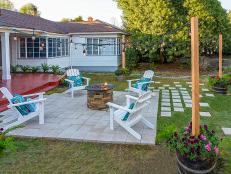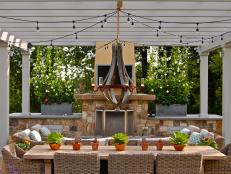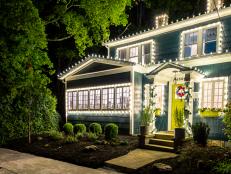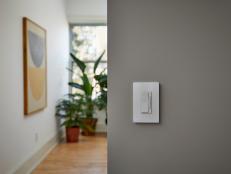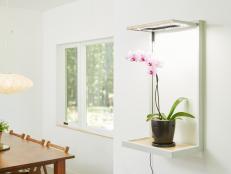How to Choose Solar Lights


Courtesy of Plow and Hearth
By sunset, most of us are putting away our garden tools. You can’t really weed or harvest or hoe in the dark, unless you have outdoor lighting. But good outdoor lighting can be pricey, and you often need a licensed electrician to install a system in your landscape.
Solar lights can be a great alternative. They’re available in a variety of prices and styles, and most are easy to stake into the ground along a driveway or path, hang from tree branches, or attach to existing structures, like deck posts.
These kind of lights work by absorbing sunlight in photovoltaic cells. The cells then charge batteries that power up LEDs, or light-emitting diodes, when it gets dark.
Because they used conventional bulbs, the first solar lights were somewhat dim. But today, most feature super-bright LEDs that don't produce as much heat as traditional bulbs. Today's units also have more efficient batteries, so they work even in the winter, when the days are short. And because solar lights don’t require as much electricity as traditional types, they’re cheaper to operate.
When you're ready to brighten your landscape, use our tips to help you find the right lights for your needs:
1. First, decide how much light you want. If you need only a soft glow, accent lights will do the trick. You’ll find models with amber, soft white, or super-bright LEDS; some even appear to flicker like candles. Accent lights provide the least amount of light in the solar lighting category, but are often the least expensive, too.
Look for solar-powered planters, cubes, orbs, lanterns, and fiber optic strands; strings of solar-powered lights; floating solar pool lights; and even decorative lights that look like fireflies, morning glories, and more. Some change colors.
2. If you need to mark a path, driveway, or other area, look for solar path lights. They’re typically sold in sets of 4, 6 or more units. Some can be staked into the ground, while others use mounting brackets or hooks, so you can hang them. In terms of price and illumination, they’re in the middle of the solar powered range.
3. Want to highlight a special feature, like a tree or sculpture in your garden? Try a solar spotlight, sometimes called a solar task light. Most spots are only about as bright as a 40-watt incandescent bulb, so you may need more than one. Some are available with motion sensors that save power when it's not needed, so you can also use them near doors and other entranceways.
Options to look for when buying solar-powered lights:
- Do the lights have plastic or glass panels, shades, or other parts? Many solar lights come with plastic, but high-grade glass panels won’t crack or turn cloudy.
- If you live in a region with a lot of cloudy days, or you have a shady yard, you can still use solar lights, although they perform best when they get 8 or more hours of sun each day. For better results, consider a remote photovoltaic panel that you can install on your roof or put in a sunny spot. You’ll need to wire it panel to the lights you use around your yard.
- Another option: look for solar lights with advanced circuitry. This kind of technology is designed to help them store up a charge even when the sky is overcast.
- Before you buy, read about the solar lights you're considering to see how long the batteries hold a charge. Top-line batteries, or so-called “next generation batteries,” can hold up to 2 ½ times the charge as older types.
- Look to see if the solar lights have reflectors. Many have plastic reflectors that let some of the stored light escape.
- Read the packaging to see many LEDs are in each unit. Some solar lights have 4 to 6 LEDs in each head, while others many have 16. The more LEDs, the brighter the glow.
- Think about how long you want your solar lights to last. Models that have batteries sealed in silicone, or one-piece "all-weather" housing that resists moisture, may be more costly up front, but you won't have to replace them as often.
- Want to save the electrical charge in your batteries, so you can use your solar lights only when you really need them? Look for models with on and off switches. Some may have timers you can set.







